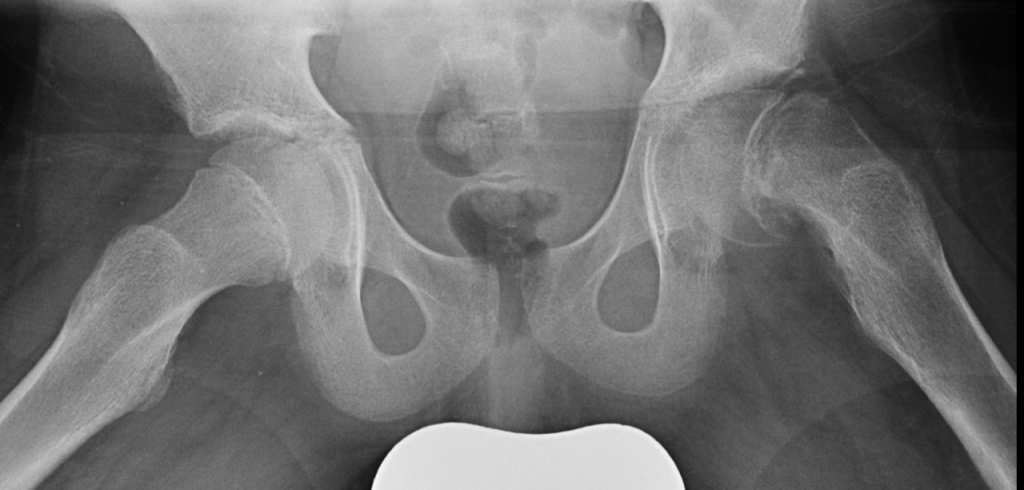Hip conditions
Snapping hip syndrome (internal and external)
This condition is cause by tight tendons flicking over bony
prominences around the hip. There is often an audible click or clunk which may
or may not be painful. External snapping hip is when the TFL (tensor fascia
lata) muscle flicks around the bony prominence called the greater trochanter at
the lateral side of the hip. Internal snapping hip is where the hip flexor
tendon (Iliopsoas) flicks over the hip joint and this is felt more in the
groin.
Both can be treated initially with physio to help stretch and elongate the muscle and tendon so its not so tight. Surgery is sometimes needed when the symptoms persist despite physio. Surgery involves releasing or lengthening the tendon or muscle.
Further information can be viewed here https://orthoinfo.aaos.org/en/diseases–conditions/snapping-hip/
Perthes
Perthes disease or Legg-Calve-Perthes disease was simultaneously described by an American, a Frenchman and a German, thus the 3 names.
It’s a condition specific to the hips or younger children with symptoms of hip, leg or knee pain often starting at anything from age 2-9 years old. For reasons that are not well understood, the blood supply to the hip is interrupted and the femoral head weakens and may collapse (avascular necrosis). There is no specific treatment to prevent this and the blood supply does come back but the whole disease process can take a couple of years to run its course. In younger children, generally under 6 at onset of symptoms, the femoral head tends to heal with a fairly spherical shape thus leading to a good outcome. In older children (over 6) the head may deform more leading to a final flatter shaped head and so more prone to arthritis.
Good, reliable sources of information on the web for perthes can be found at…
https://perthesdisease.org/
https://www.stepsworldwide.org/product/perthes-disease-parents-guide/

SCFE
SCFE or slipped capital femoral epiphysis is a rare condition affecting older children and teenagers. Mechanical and biological factors combine to weaken the growth plate at the top of the femur at the hip level leading to pain and deformity. This can happen suddenly (acute slip) or slowly over weeks or months (chronic slip). The pain is in the groin or thigh and sometimes its even felt in the knee. An xray can make the diagnosis and prompt surgical treatment is important to stabilise the growth plate and prevent further slippage.
Good, reliable sources of information on the web for SCFE can be found at…
https://www.stepsworldwide.org/conditions/sufe-slipped-upper-femoral-epiphysis/
DDH
Developmental Dysplasia of the hip is a condition where the ball and socket joint of the hip doesn’t form properly in babies and young children. Early detection and treatment is important to help the hip form properly and prevent longer term problems in the future.
Our clinic does not provide ultrasound assessment and Pavlik harness treatment to babies however we can provide advice and recommend prompt onward referral to the Southampton Children Hospital DDH service if needed.


